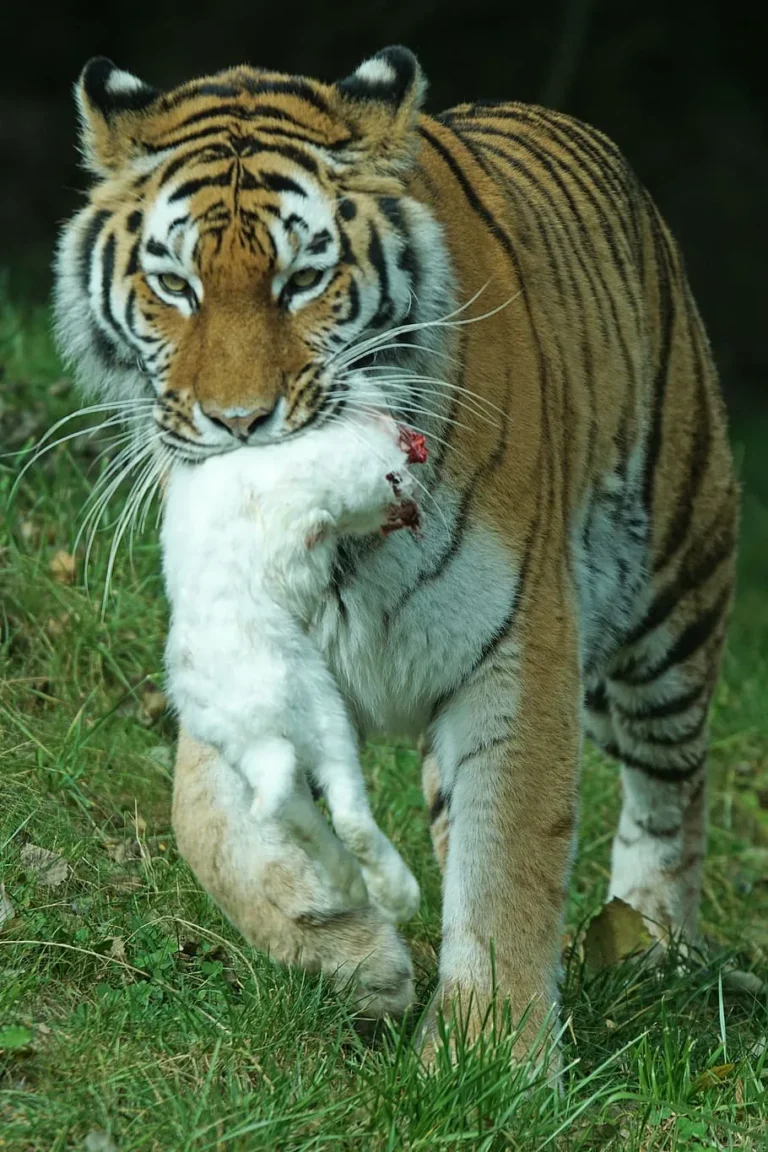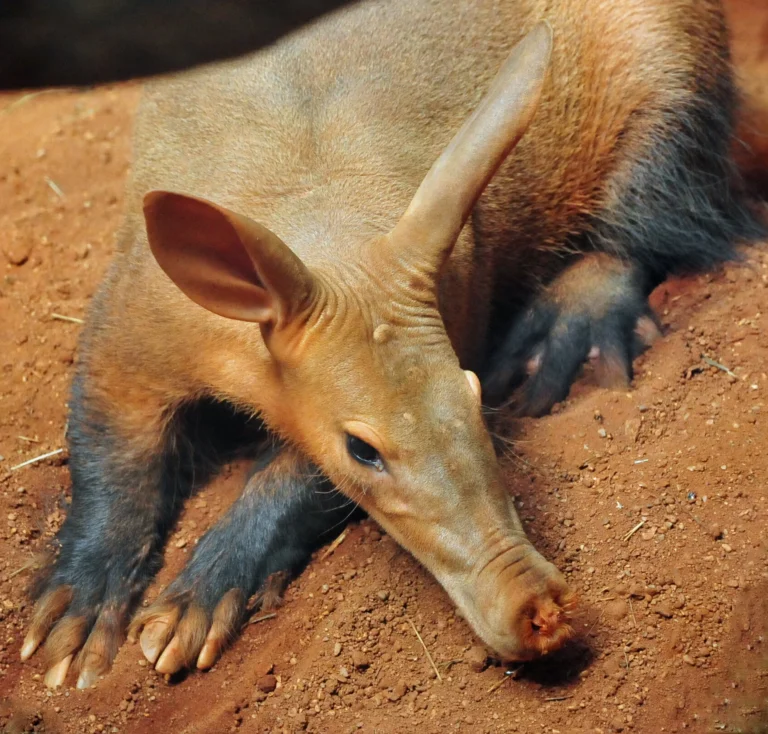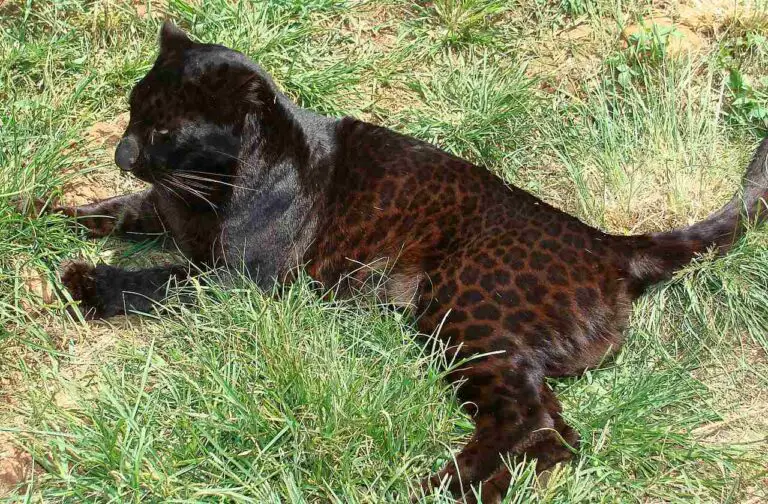Red Fox Vs Gray Fox Vs Kit Fox Size, Weight, Ecological Comparison
The red fox (Vulpes vulpes), wiith its larger size and advanced predatory features, has the advantage over the gray fox (Urocyon cinereoargenteus). On the other hand, the gray fox is still larger and heavier than the kit fox (Vulpes macrotis), giving it the upper hand in a confrontation. The size difference between the red fox and the kit fox is notable, making the red fox the clear winner in a fight. These variations in size and weight contribute to the unique characteristics and ecological roles of each fox species.
| Feature | Red Fox | Gray Fox | Kit Fox |
| Taxonomy | Vulpes vulpes | Urocyon cinereoargenteus | Vulpes macrotis |
| Appearance | Reddish-orange coat, white underparts, bushy tail | Grizzled gray/black/reddish coat |
Sandy/pale yellowish coat
|
| Size (length) | 18-35 inches (45-90 cm) | 21-29 inches (53-74 cm) |
18-21 inches (45-53 cm)
|
| Weight | 7-31 pounds (3-14 kg) | 7-15 pounds (3-7 kg) |
3-6 pounds (1.4-2.7 kg)
|
| Predatory Features | Longer teeth, larger size, wider prey range | Strong bite, agility |
Smaller fangs, efficient desert hunter
|
| Advantages in a Fight | Size, strength, predatory skills | Size, strength, climbing ability |
Agile, adapted to desert
|
| Disadvantages in a Fight | None against gray fox | Smaller than red fox |
Smaller than both red & gray fox
|
| Habitat | Forests, grasslands, urban areas | Woodlands, forests | Desert |
| Typical Prey | Rabbits, rodents, birds | Small mammals, insects, fruits |
Lizards, rodents, insects
|
| Relationship with Humans | Avoids contact, occasionally interacts in urban areas | Avoids contact, may scavenge in rural areas |
Avoids contact, not found near humans
|
Reasons Why a Red Fox Will Win a Gray Fox in a Fight/Physical Confrontation
I). Significant Size Disparity
One of the main reasons why a red fox would win in a fight against a gray fox is the significant size disparity between the two species. Red foxes are generally larger and heavier than gray foxes, giving them a clear advantage in physical confrontations.
The larger size of the red fox allows it to have more strength and power, making it more capable of overpowering its opponent. With its larger body and stronger muscles, the red fox can deliver more forceful bites and strikes, making it more likely to come out victorious in a fight.

II). Superior Predatory Features
In addition to its larger size, the red fox also possesses superior predatory features that give it an edge over the gray fox. The red fox has longer teeth, which are better suited for capturing and killing prey.
These longer teeth allow the red fox to deliver more effective and lethal bites, increasing its chances of overpowering its opponent. Furthermore, the red fox has a more advanced hunting strategy and a wider range of prey, which gives it more experience and skill in hunting and fighting.
Reasons Why a Gray Fox Will Win a Kit Fox in a Fight/Physical Confrontation
I). Gray Foxes are Larger and Heavier Than Kit Foxes
One of the main reasons why a gray fox would win in a fight against a kit fox is the size and weight advantage. Gray foxes are generally larger and heavier than kit foxes, giving them a physical edge in confrontations.
The larger size of the gray fox allows it to have more strength and power, making it more capable of overpowering its opponent. With its bigger body and stronger muscles, the gray fox can deliver more forceful bites and strikes, increasing its chances of emerging victorious in a fight.
II). Gray Foxes are Stronger Than Kit Foxes
In addition to their larger size, gray foxes are also stronger than kit foxes. The strength of the gray fox enables it to exert more force and deliver more powerful attacks. This strength advantage allows the gray fox to dominate in physical confrontations, overpowering the smaller and weaker kit fox. With its superior strength, the gray fox can effectively defend itself and assert dominance over its opponent.
Therefore, the larger size and greater strength of the gray fox give it a clear advantage over the kit fox in a fight or physical confrontation. These physical attributes allow the gray fox to overpower and outmatch the smaller and weaker kit fox, ensuring its victory in such encounters.
Reasons Why a Red Fox Will Win a Kit Fox in a Fight/Physical Confrontation
I). Red Foxes are Larger, Heavier, and Stronger
Red foxes have a clear advantage over kit foxes in a fight or physical confrontation due to their larger size, heavier weight, and greater strength. The red fox is generally larger and heavier than the kit fox, giving it a physical edge in confrontations.
With its bigger body and stronger muscles, the red fox can deliver more forceful bites and strikes, increasing its chances of emerging victorious in a fight.
II). Higher Predatory Capacity
Another reason why a red fox would win in a fight against a kit fox is its higher predatory capacity. Red foxes are known for their exceptional hunting skills and adaptability, making them formidable predators.
They have a wider range of prey options and are more experienced in hunting and capturing their targets. This predatory advantage gives the red fox an upper hand in a physical confrontation with the kit fox, as it possesses the skills and instincts necessary to outmaneuver and overpower its opponent.
Therefore, the larger size, heavier weight, and greater strength of the red fox, combined with its higher predatory capacity, make it more likely to win in a fight or physical confrontation against the kit fox.
*Red Fox Vs Gray Fox Size, Weight, Taxonomy
a). Taxonomic Classification
When comparing the red fox and the gray fox, it is important to consider their taxonomic classification. Both species belong to the same genus, Vulpes, but they are different species.
The red fox is scientifically known as Vulpes vulpes, while the gray fox is known as Urocyon cinereoargenteus. Despite their taxonomic similarities, these two fox species are not closely related.
b). Appearance
The red fox and the gray fox have distinct appearances that set them apart. The red fox is known for its vibrant reddish-orange coat, which is why it gets its name. Its fur is thick and fluffy, providing insulation during colder months. In contrast, the gray fox has a more muted coloration, with a mix of gray, black, and reddish tones. Its fur is also thick, but it has a grizzled appearance due to the combination of colors.
In terms of skin, both fox species have a similar structure. Their skin is covered in a layer of fur, which helps with insulation and protection. However, the red fox’s fur is typically denser and longer than that of the gray fox. This difference in fur density can be attributed to their respective habitats and environmental adaptations.
When it comes to camouflage, both fox species have evolved to blend in with their surroundings. The red fox’s reddish-orange coat allows it to blend in with autumn foliage and grassy areas. On the other hand, the gray fox’s gray and black fur helps it blend in with rocky or forested environments. This camouflage is crucial for their survival, as it allows them to remain hidden from predators and prey alike.
In terms of stature, the red fox is generally larger and more robust than the gray fox. Adult red foxes can reach a length of 18 to 35 inches (45 to 90 cm) and weigh between 7 to 31 pounds (3 to 14 kg). In comparison, adult gray foxes are slightly smaller, measuring 21 to 29 inches (53 to 74 cm) in length and weighing between 7 to 15 pounds (3 to 7 kg). While the size difference may not be significant, it does contribute to variations in their physical capabilities.
c). Size and Weight Comparison
As mentioned earlier, the red fox is larger and heavier than the gray fox. This size difference can have implications for their overall strength and physical abilities. The red fox’s larger size gives it an advantage in terms of power and force. With its bigger body and stronger muscles, the red fox is capable of delivering more forceful bites and strikes. This can be a significant advantage in a fight or physical confrontation.
In contrast, the gray fox’s smaller size may make it more agile and maneuverable. While it may not have the same physical strength as the red fox, its smaller stature allows it to navigate through tight spaces and climb trees more easily. This agility can be advantageous in certain situations, such as escaping from predators or accessing food sources in elevated areas.
d). Who Will Win in a Fight Between Them
Determining who would win in a fight between a red fox and a gray fox is not a straightforward answer. While the red fox may have a size and strength advantage, the outcome of a fight would depend on various factors, including the individuals involved, their motivations, and the specific circumstances.
In general, the red fox’s larger size and greater strength give it an edge in physical confrontations. However, the gray fox’s agility and ability to climb trees could provide it with an advantage in certain scenarios. Additionally, factors such as experience, strategy, and individual temperament can also influence the outcome of a fight.
It is important to note that foxes are generally not aggressive towards each other unless they are competing for resources or defending their territories. In most cases, foxes will try to avoid physical confrontations and instead rely on intimidation displays or vocalizations to establish dominance.
e). Key Differences and Similarities
Apart from their size, appearance, and physical capabilities, there are other key differences and similarities between the red fox and the gray fox.
In terms of intelligence, both species are highly adaptable and intelligent. They have demonstrated problem-solving abilities and the capacity to learn from their experiences. This intelligence allows them to thrive in various environments and successfully navigate challenges they encounter.
In regards to habitats, red foxes are more adaptable and can be found in a wide range of habitats, including forests, grasslands, and urban areas. Gray foxes, on the other hand, are more closely associated with woodland habitats and are known for their ability to climb trees. This difference in habitat preference reflects their respective ecological adaptations and resource requirements.
When it comes to their interactions with humans, both red foxes and gray foxes generally avoid direct contact and prefer to keep their distance. However, they can become habituated to human presence in urban areas where food sources are readily available. While they are not typically dangerous to humans, it is important to respect their wild nature and avoid feeding or approaching them.
Therefore, the red fox and the gray fox differ in terms of taxonomic classification, appearance, size, and weight. The red fox is larger and heavier, giving it a physical advantage in confrontations. However, the gray fox’s agility and climbing abilities can provide it with certain advantages in specific situations.
*Gray Fox Vs Kit Fox Size, Weight, Taxonomy
a). Taxonomic Classification
The gray fox and the kit fox belong to different genera and species, indicating that they are not closely related. The gray fox is classified as Urocyon cinereoargenteus, while the kit fox is known as Vulpes macrotis.
Despite their taxonomic differences, both fox species share certain similarities in their physical characteristics and behaviors.
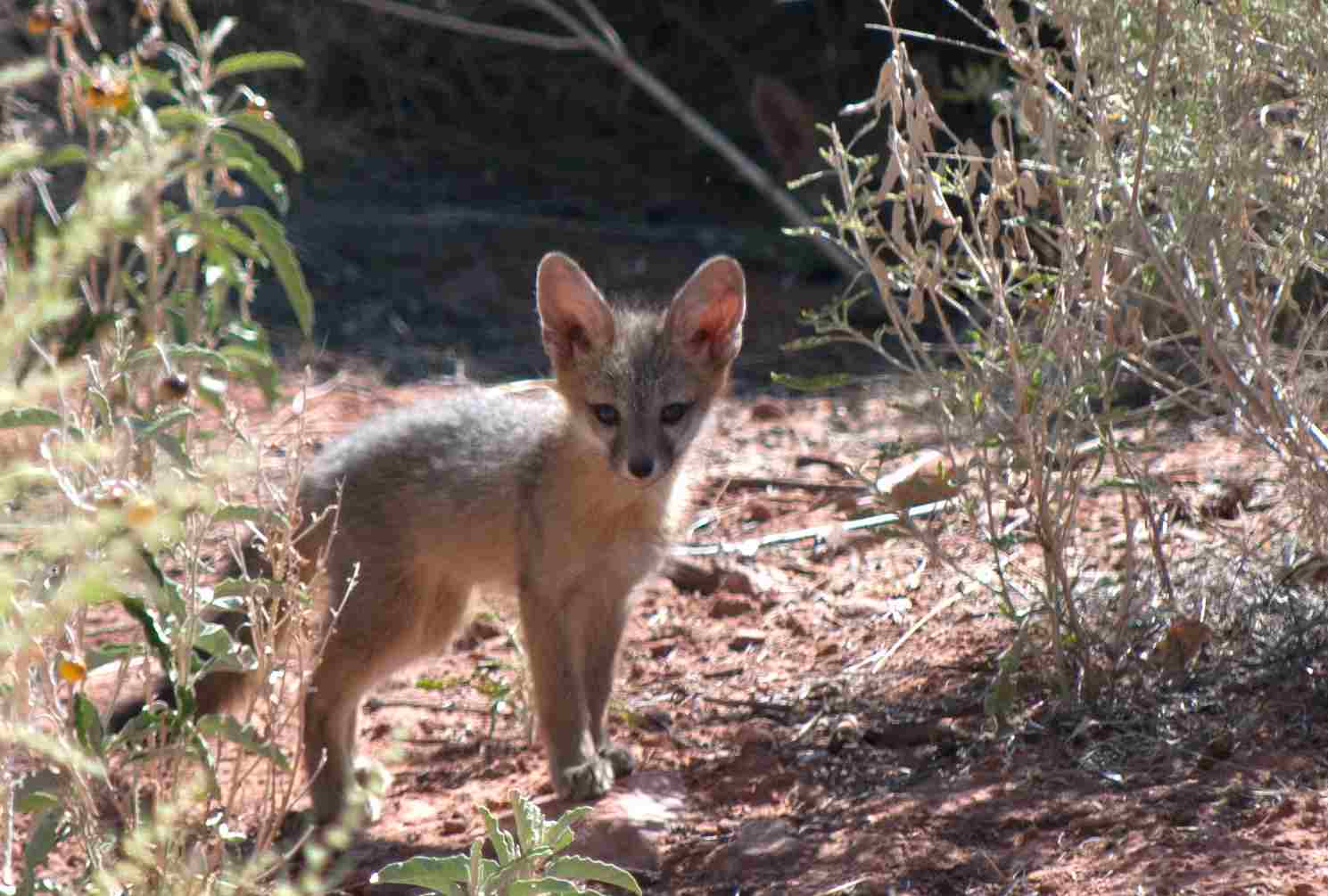
b). Appearance
In terms of appearance, the gray fox and the kit fox have distinct features that set them apart. The gray fox has a grizzled coat with a mix of gray, black, and reddish tones. Its fur is thick and provides insulation during colder months. On the other hand, the kit fox has a sandy or pale yellowish coat, which helps it blend in with its desert habitat. Its fur is also thick, but it has a lighter and more muted coloration compared to the gray fox.
Both fox species have adapted their fur and skin to suit their respective environments. The gray fox’s fur helps it blend in with rocky or forested areas, while the kit fox’s lighter fur provides camouflage in the desert. Additionally, both species have a similar stature, with adult gray foxes measuring 21 to 29 inches (53 to 74 cm) in length and adult kit foxes measuring 18 to 21 inches (45 to 53 cm) in length.
c). Size and Weight Comparison
When comparing the size and weight of the gray fox and the kit fox, it is evident that the gray fox is slightly larger and heavier. Adult gray foxes typically weigh between 7 to 15 pounds (3 to 7 kg), while adult kit foxes weigh between 3 to 6 pounds (1.4 to 2.7 kg). This size difference may contribute to variations in their physical capabilities and hunting strategies.
d). Who Will Win in a Fight Between Them
Determining the outcome of a fight between a gray fox and a kit fox is difficult to predict. While the gray fox may have a slight size advantage, the kit fox’s agility and adaptability to desert environments could give it an edge in certain situations.
Factors such as individual temperament, experience, and specific circumstances would play a significant role in determining the winner of a physical confrontation between these two fox species.
e). Key Differences and Similarities
Apart from their size, appearance, and physical capabilities, there are other key differences and similarities between the gray fox and the kit fox. In terms of intelligence, both species are highly adaptable and have demonstrated problem-solving abilities.
They are also known for their ability to thrive in their respective habitats, with the gray fox being more closely associated with woodland areas and the kit fox being adapted to desert environments.
*Red Fox Vs Kit Fox Size, Weight, Taxonomy
a). Taxonomic Classification
The red fox and the kit fox belong to different genera and species, indicating that they are not closely related. The red fox is classified as Vulpes vulpes, while the kit fox is known as Vulpes macrotis. Despite their taxonomic differences, both fox species share certain similarities in their physical characteristics and behaviors.
b). Appearance
In terms of appearance, the red fox and the kit fox have distinct features that set them apart. The red fox has a vibrant reddish-orange coat with white underparts and a bushy tail with a white tip. Its fur is dense and provides insulation during colder months.
On the other hand, the kit fox has a sandy or pale yellowish coat, which helps it blend in with its desert habitat. Its fur is also thick, but it has a lighter and more muted coloration compared to the red fox.
Both fox species have adapted their fur and skin to suit their respective environments. The red fox’s reddish coat helps it blend in with a variety of habitats, including forests, grasslands, and urban areas.
The kit fox’s lighter fur provides camouflage in the desert, allowing it to hide from predators and prey. Additionally, both species have a similar stature, with adult red foxes measuring 18 to 35 inches (45 to 90 cm) in length and adult kit foxes measuring 18 to 21 inches (45 to 53 cm) in length.
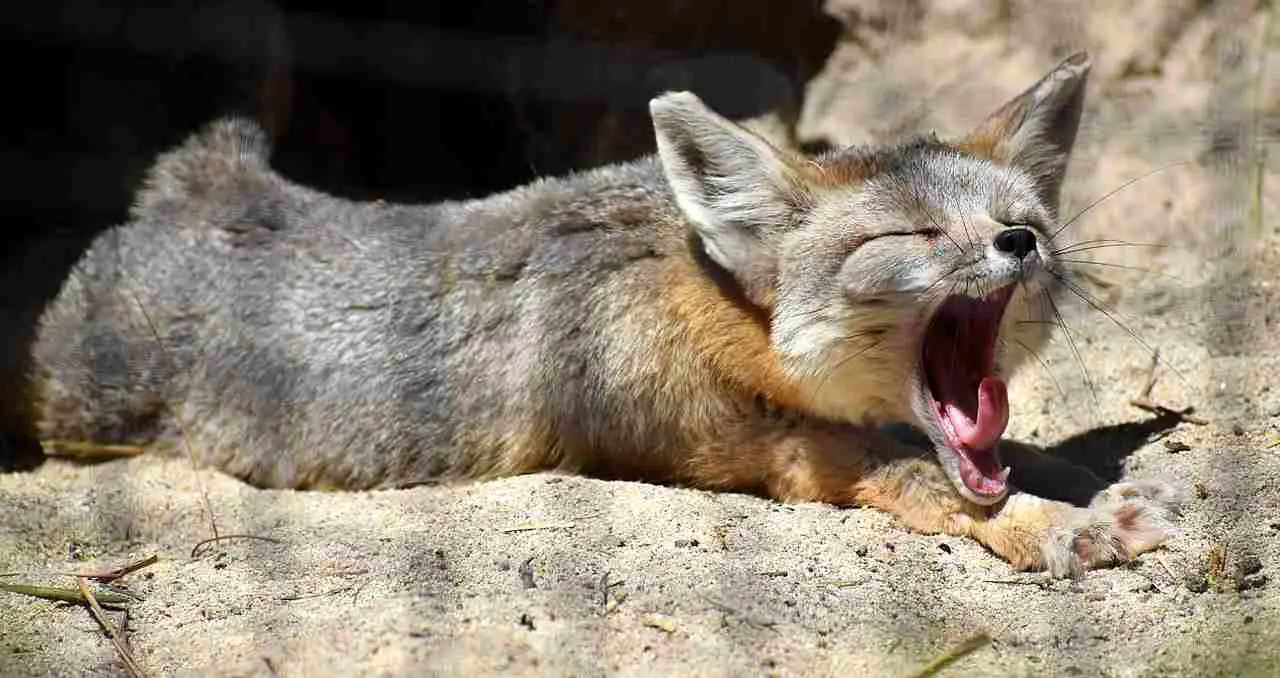
c). Size and Weight Comparison
When comparing the size and weight of the red fox and the kit fox, it is evident that the red fox is larger and heavier. Adult red foxes typically weigh between 7 to 15 pounds (3 to 7 kg), while adult kit foxes weigh between 3 to 6 pounds (1.4 to 2.7 kg). This size difference may contribute to variations in their physical capabilities and hunting strategies.
d). Who Will Win in a Fight Between Them
Determining the outcome of a fight between a red fox and a kit fox is difficult to predict. While the red fox may have a size advantage, the kit fox’s agility and adaptability to desert environments could give it an edge in certain situations.
Factors such as individual temperament, experience, and specific circumstances would play a significant role in determining the winner of a physical confrontation between these two fox species.
e). Key Differences and Similarities
Apart from their size, appearance, and physical capabilities, there are other key differences and similarities between the red fox and the kit fox. In terms of intelligence, both species are highly adaptable and have demonstrated problem-solving abilities.
They are also known for their ability to thrive in their respective habitats, with the red fox being more closely associated with a wide range of environments, including forests, grasslands, and urban areas, while the kit fox is adapted to desert environments.
In terms of their interactions with humans, both the red fox and the kit fox generally avoid contact and are not considered dangerous. However, they may occasionally come into conflict with humans when their habitats overlap or when they scavenge for food in urban areas. It is important to note that both species play important roles in their ecosystems as predators and scavengers, helping to control populations of small mammals and contributing to the overall balance of their respective habitats.
Therefore, while the red fox and the kit fox may have some similarities in their physical characteristics and behaviors, they also have distinct differences that reflect their adaptations to different environments. The red fox is larger and more versatile in terms of habitat, while the kit fox is specialized for survival in the desert.
Conclusion
In conclusion, this article has explored the size, weight, and taxonomy of the red fox, gray fox, and kit fox. We have discussed their taxonomic classification, appearance, size and weight comparison, and their potential outcomes in a physical confrontation.
The red fox and the kit fox belong to different genera and species, indicating their lack of close relation. While the red fox has a vibrant reddish-orange coat and a larger size, the kit fox has a sandy or pale yellowish coat and is smaller in size. Despite these differences, both species have adapted their fur and skin to suit their respective environments.
When comparing their size and weight, the red fox is larger and heavier than the kit fox. However, determining the outcome of a fight between them is difficult to predict, as factors such as individual temperament and specific circumstances play a significant role.
In terms of intelligence and adaptability, both species have demonstrated problem-solving abilities and the ability to thrive in their respective habitats. They also play important roles in their ecosystems as predators and scavengers.

